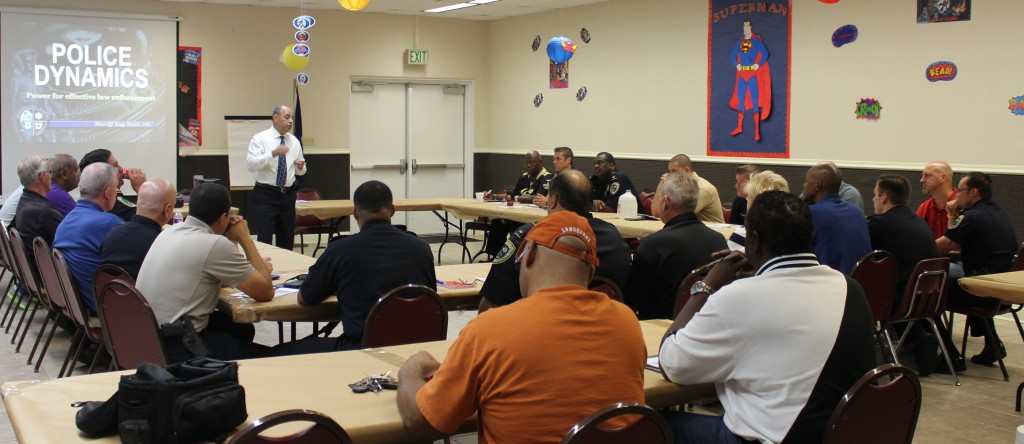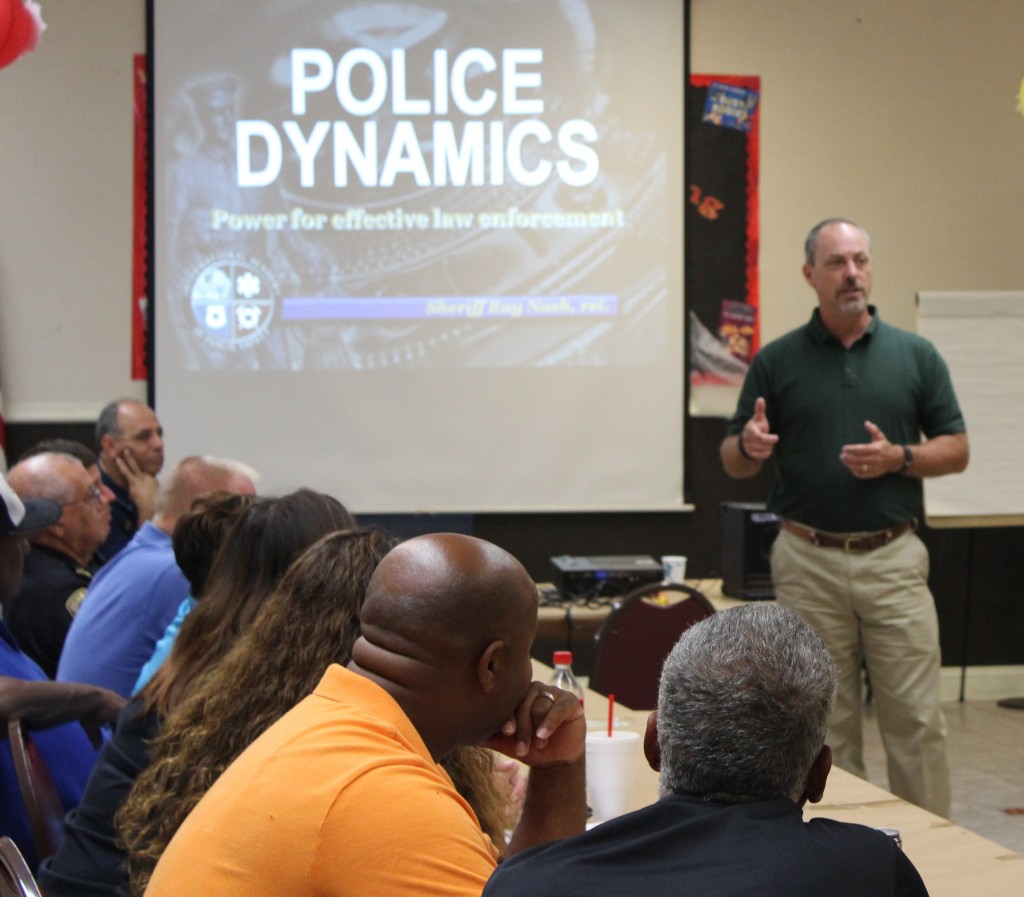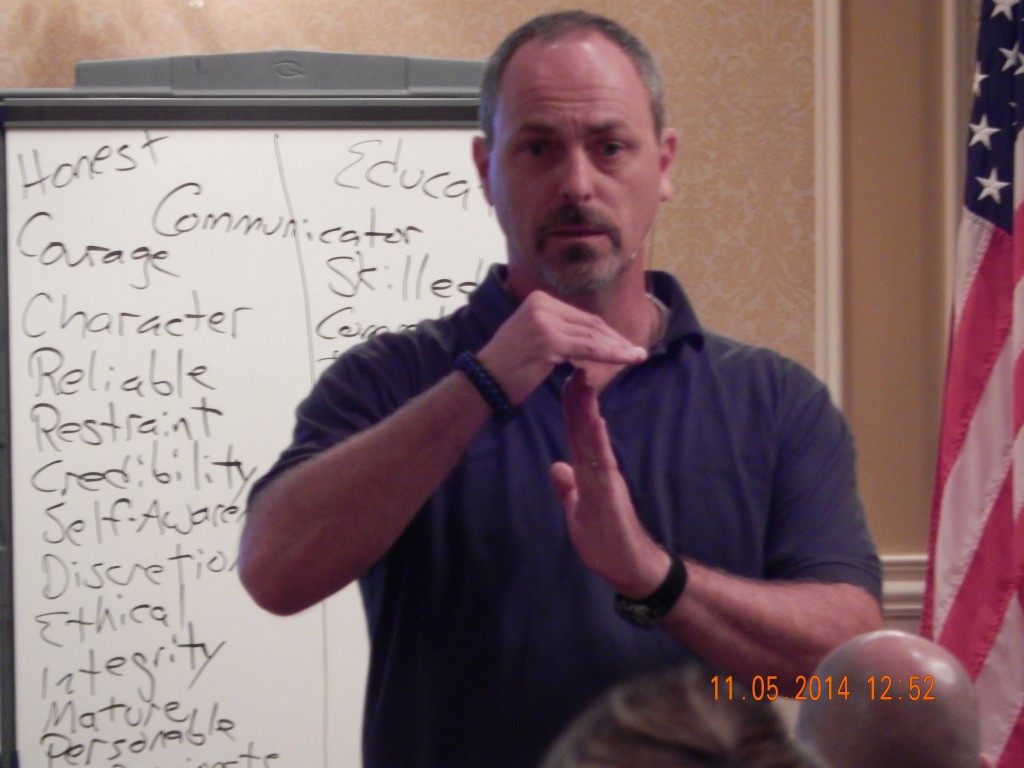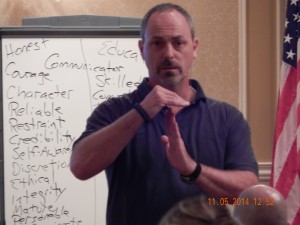Category Archives: Police Dynamics
In a nutshell, the Police Dynamics program is a character-based approach to dealing with the challenges facing law enforcement officers and their agencies. Over 10,000 law enforcement officers and government leaders from around the world have benefited from the training. In light of recent events and the new challenges being presented to our law enforcement officers, the principles of Police Dynamics are needed now more than ever.
I am putting together my training calendar for 2016-2017. So if you or your agency would like to host a Police Dynamics seminar, please contact me right away and I will send you a training proposal.
Police Dynamics teaches officers how to:
- Keep their egos in check when their authority is challenged
- Re-build trust-based relationships even in the most troubled and crime-ridden neighborhoods
- Generate voluntary compliance by relying on positional authority instead of ego-power
- Stabilize and strengthen internal relationships that generate stress and conflict
- Develop leadership capacity throughout the agency
- Encourage and motivate each other to the highest levels of morale and performance
- Practice ethical decision-making when under stress or facing temptation
- Faithfully represent the principles and standards of the agency and profession
- Exercise discretion in a just and legally defensible manner
- Respectfully make appeals when an authority is in the wrong or faced with conflicting instructions
- Use tactical communications to overcome resistance and de-escalate tension without resorting to physical force
- Implement proven crime-fighting strategies that reduce the fear, apathy, tolerance for crime, and mistrust of the police that fuel criminal activity
- Exceed citizen expectations to build confidence and support
- Successfully navigate the complexities of building trust-based relationships among diverse groups
- Establish, Embrace, Encourage, Embody, and Enforce the highest standards of professional excellence
Category: Police Dynamics
Seasoned law enforcement leaders recognize that there is an intricate link between officer morale and performance. Consequently, the morale of any law enforcement agency impacts the crime rate.
Those of us in police leadership must be actively engaged in showing our police officers, deputy sheriffs, and correctional officers that they are appreciated, encouraged, and motivated to fight crime and maintain the law, order, health, safety, and morals of their communities, whether on the streets or inside the detention facility. Making the Character Connection by praising them for the character quality that produced outstanding achievement is an excellent way of improving morale and fighting crime. Remember,
“Failure to Motivate Is Failure to Lead.”
Enjoy this short video produced by the International Academy of Public Safety. We are putting the entire Police Dynamics curriculum into an online format, so stay tuned…
Since founding the Police Dynamics Institute in 1998, I have often been asked for a simple description of the training, and found it very difficult to come up with one. Essentially, a dynamic is a principle. And the best I can do is compare the character-based principles of Police Dynamics to some of the physical principles of the universe.
For example, the Law of Gravity impacts our relationships with the things that are around us. And a physical principle like gravity can’t be violated like you can violate a man-made law. And the Law of Gravity could care less whether you believe in it or not. It’s all about cause and effect. It’s the same reason I wear a seatbelt in my car. I know that if I am in a collision, the Law of Linear Motion, Newton’s First Law, will cause my body to continue going forward, at whatever speed I happen to be traveling. Since that would not be a pleasurable experience, I choose to buckle up to bring my body into harmony with that principle.
The principles of Police Dynamics are similar, but they differ on two important points. They do not deal with our relationships with things, but our relationships with people. And the causes and effects attached to these principles are much more difficult to discern. So we must dig deep and go below the surface to enhance our understanding. Then we can make good choices to bring our lives, our agencies, and our communities into harmony with these principles.
Category: Police Dynamics
In this short video recorded at a recent Police Dynamics conference hosted by the Brownsburg, IN Police Department, I emphasize that fact that failure to clearly articulate a standard is a leadership failure. Then explore the definition of the character-based standard of Obedience.
OBEDIENCE:
Quickly fulfilling the expectations of my authorities while guarding my attitude.
The first part of E5 Leadership is to Establish the Standard. Standards in the law enforcement profession tend to be performance, behavior, or achievement-based standards. But Credible Leadership requires that we establish character-based standards. The second step in E5 Leadership is to Embrace the Standard. This has to do with communicating the standard at every level. The character-based standard should be reinforced through selection, training, officer recognition, promotion, discipline, terminations, critical incident debriefings and every other aspect you can think of.
To learn more about the character quality of Obedience as it applies to a law enforcement agency, click on the pdf below…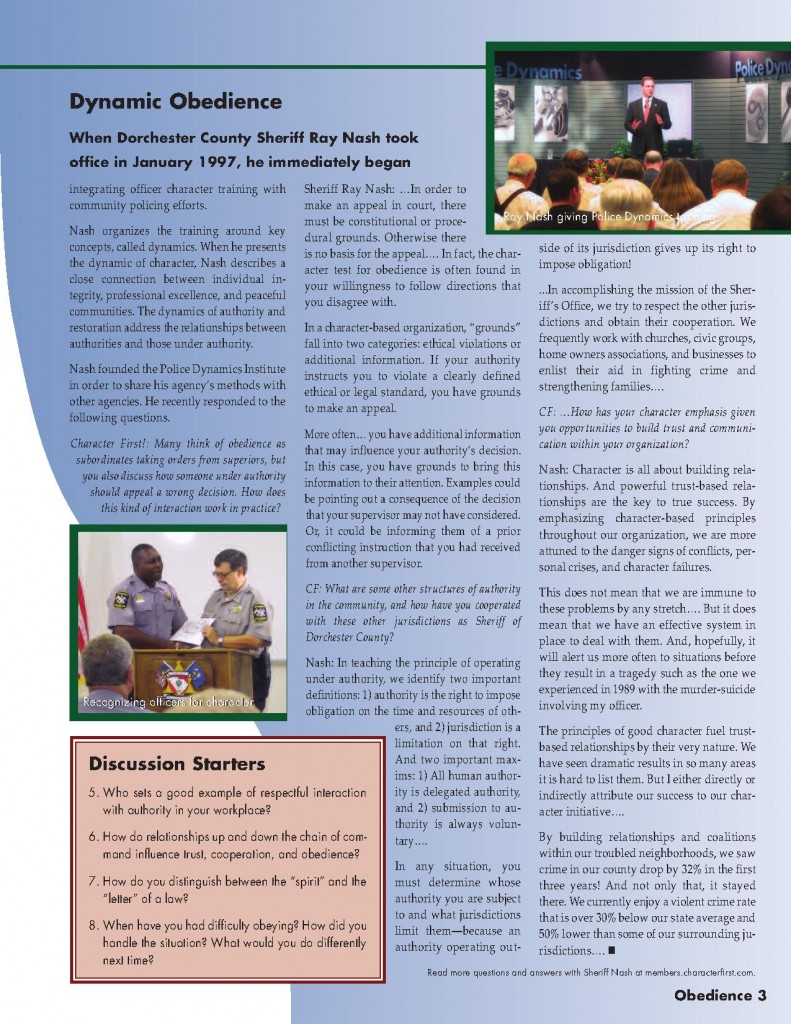
Source: Character First, Oklahoma City, OK
Category: Dynamic of Restoration, Police Dynamics
The Plaquemines Parish Sheriff’s Office, under the leadership of Sheriff Lonnie Greco, is setting a high standard in support of ethical leadership. One of the first law enforcement agencies in the State of Louisiana to adopt the Sheriff’s Institute for Credible Leadership Development, PPSO takes its commitment that “Every Officer Is a Leader” very seriously.
I recently had the opportunity to provide Police Dynamics training to first-line supervisors and spend some quality time with Sheriff Greco. He is to be commended for his commitment to promoting good character and ethical leadership throughout his organization and for setting a good example for other law enforcement agencies to follow.
Interestingly, the venue for the training was a local library which featured a “superhero” theme for its summer reading program as you can see from the posters on the walls. I was grateful for the opportunity to interact with some REAL superheroes, the Plaquemines Parish Sheriff’s Deputies…! 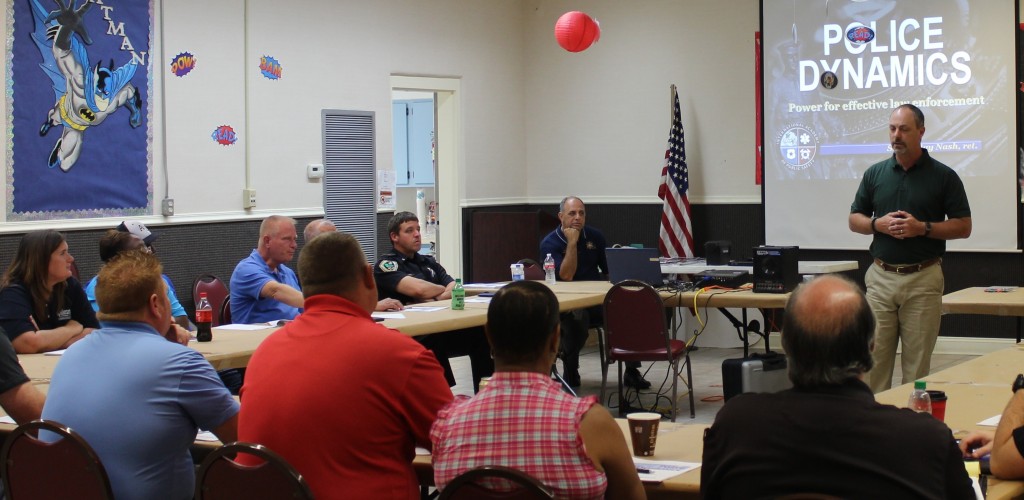
Category: Police Dynamics
In conjunction with the International Academy of Public Safety and the National Sheriff’s Association, we are embarking on a new leadership development program called E5 Leadership. This training video was filmed at the George Washington House on the island of Barbados.
Let us raise up a standard to which the wise and honest can repair. The results are in the hands of God. ~ George Washington
When you boil down most of the leadership principles that we teach through Police Dynamics or the Institute for Credible Leadership Development, they center around the Standards of an organization. We often think of a standard as a flag or banner being carried into battle. When the standard-bearer goes down, another soldier will immediately pick up the flag. Why? The flag itself is just a piece of material. It’s not what the flag IS that is so meaningful. But what the flag REPRESENTS that makes it so important. The same is true of our badge, our patch, our uniform and the other symbols attached to the law enforcement profession.
It also applies to the standards of our profession and our agency. A standard is a measure of quality, a model or ideal of what is true, right, and just. So E5 Leadership focuses on the standard or identity of your agency from 5 different perspectives:
-
E1 – Establish the Standard
-
E2 – Embrace the Standard
-
E3 – Embody the Standard
-
E4 – Encourage the Standard
-
E5 – Enforce the Standard
In coming posts, we will look at each of these elements in more detail…
Category: Dynamic Leadership, Police Dynamics
Enjoy this video from Watts Bar Lake in Tennessee…
The Dynamic of Expectations gives us a framework for understanding community expectations. By viewing citizen expectations as a continuum with “exceeding expectations” on the positive end and “failing to meet expectations” on the negative, the zero point becomes “meeting expectations.” When we meet expectations, it means we have done our job, nothing more and nothing less. This means we are getting no complaints. We have a tendency to think that as long as we are not getting any complaints, things must be going OK. But Zero Complaints is a very poor standard of excellence for a law enforcement agency.
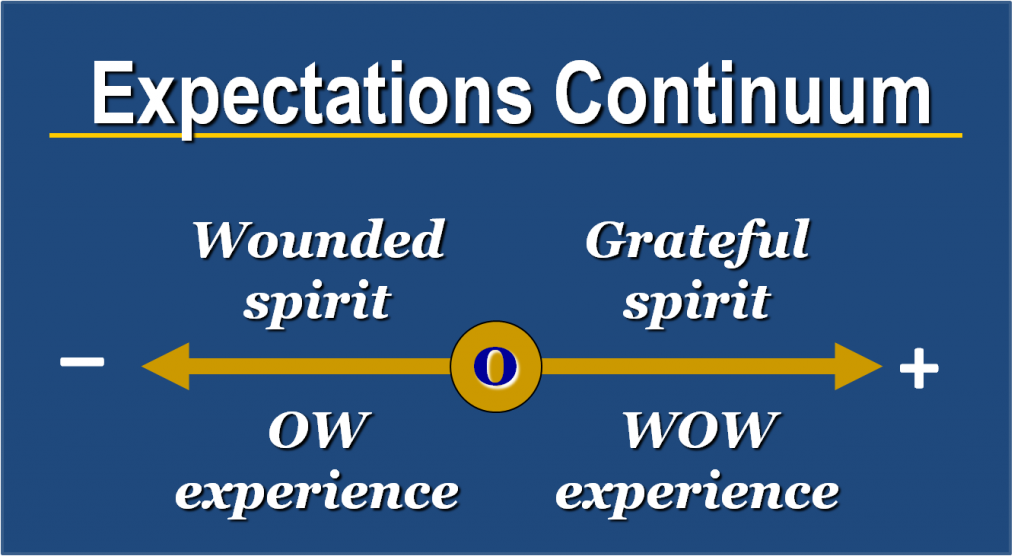 Police officers must learn to exceed citizen expectations by giving them a WOW experience. The problem is that we don’t really know where their expectations are. So, as a professional police officer, you must ground their expectations in reality by telling them what you are going to do, and then doing it. In this way, you control their expectations. In fact we have a term to describe someone who does what they say they are going to do. We say that person has a lot of Integrity, which is the first step in forming trust-based relationships as we outlined in the Relationship Diamond.
Police officers must learn to exceed citizen expectations by giving them a WOW experience. The problem is that we don’t really know where their expectations are. So, as a professional police officer, you must ground their expectations in reality by telling them what you are going to do, and then doing it. In this way, you control their expectations. In fact we have a term to describe someone who does what they say they are going to do. We say that person has a lot of Integrity, which is the first step in forming trust-based relationships as we outlined in the Relationship Diamond.
And remember the Expectations Maxim:
Unfulfilled Expectations Damage Relationships
But after meeting their expectations, you job is not yet done. Very methodically and systematically, you must go just a little beyond and exceed their expectations. By doing this you will generate a Grateful Spirit which translates into community support for your law enforcement efforts. Failing to meet their expectations, however, gives them an OW Experience. Those hurt and can lead to a Wounded or Bitter Spirit that translates into public criticism and lack of trust. Don’t believe me? Take a look at what is going on in Ferguson and many other places around America. The citizens we are sworn to protect are doubting us, losing faith in us, and worse…
Sheriff Ray Nash
Police Dynamics Institute
Category: Dynamic of Expectations
Unresolved anger is one of the most prevalent problems in law enforcement today. It can lead to all sorts of ethical failures by our police, including abuse of force, unlawful arrests, and a myriad of other constitutional and ethical violations. Giving up your right to get angry is power under control and shows genuine meekness – a powerful character quality for any professional police officer to possess. And in light of recent events questioning police use of force, this video that I recorded in Cancun a few years ago seems particularly timely and relevant. Please let me know what you think.
Category: Dynamic of Restoration
I recently had the opportunity to present Police Dynamics training to about 160 fellow members of the National Internal Affairs Investigators Association at their annual conference in Tampa. NIAIA promotes the highest standards of integrity and professional ethics in the law enforcement community and provides technical support and professional development for IA investigators. Although they are often viewed as pariahs, IA investigators play a crucial role in promoting the noble virtues of the police profession.
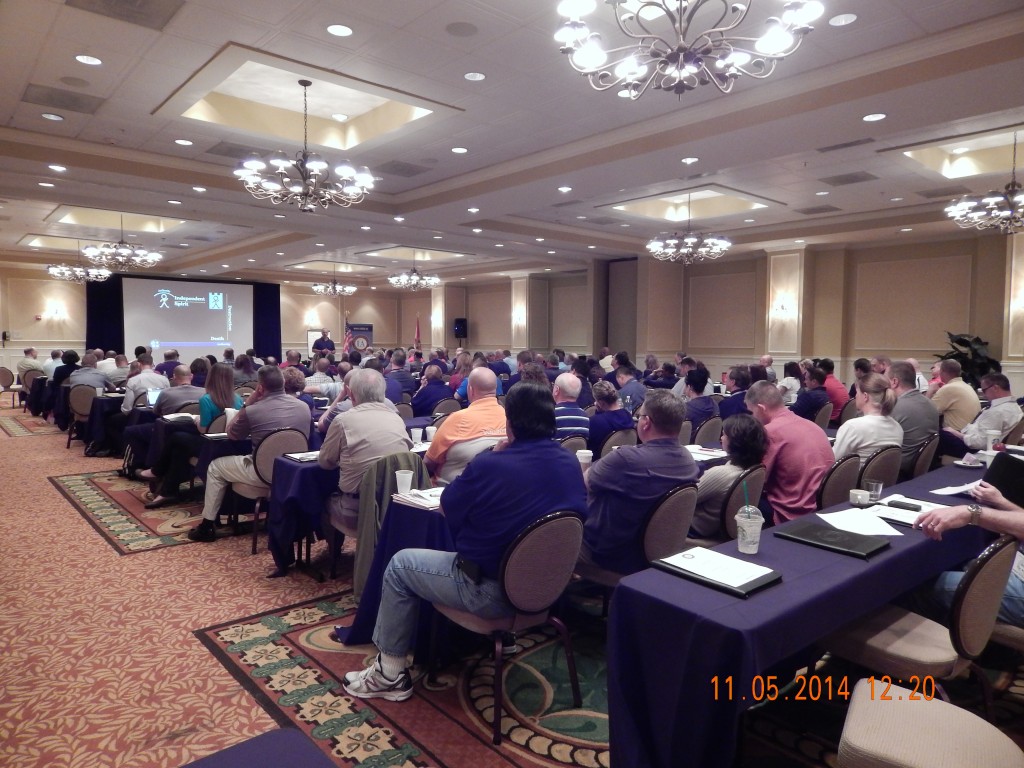 I decided to kick off my portion of the training with a compelling video dealing with police abuse of force. In light of recent events in Ferguson, MO, it seemed particularly relevant to the audience. Although the video seems to be biased against law enforcement, the lyrics are clever and the images are disturbing to those of us who promote high standards for the police profession.
I decided to kick off my portion of the training with a compelling video dealing with police abuse of force. In light of recent events in Ferguson, MO, it seemed particularly relevant to the audience. Although the video seems to be biased against law enforcement, the lyrics are clever and the images are disturbing to those of us who promote high standards for the police profession.
Is this perception or reality? Probably some of both. But to change perception you have to start by changing the reality. And the reality is that the public is becoming less trustful of the police and increasingly concerned about an “over-militarization” of police tactics. Answers to these problems may seem to be elusive, but Police Dynamics provides an ethical foundation for moral policing that impacts perception as well as reality.
As an aside, I am putting together the Police Dynamics schedule for 2015. So if your agency is interested in hosting a conference similar to the one we did for NIAIA, please contact me through this website…
Sheriff Ray Nash
Category: Police Dynamics
Unfulfilled expectations damage relationships. This is a fundamental truth. So as a law enforcement officer entering into a contact with a citizen, you must understand that they have certain expectations about who you are and how you will perform as a police officer. Unfortunately, the citizen’s expectations may be very unrealistic. Therefore, it is up to you to ground their expectations in reality by first telling them what you are going to do, then doing it. It sounds overly simplistic, but it is a powerful principle that we often overlook. Plus we have a word to describe people who do what they say they are going to do. We say they have a lot of integrity, which is the first essential ingredient for building trust and generating public support.
 Once you have established control over their expectations, it is up to you to very methodically meet those expectations. Then go one step further and exceed those expectations. I call this a WOW experience. WOW experiences translate into public support. However, if you fail to meet their expectations, that is an OW experience! And those hurt. They siphon trust out of the relationship.
Once you have established control over their expectations, it is up to you to very methodically meet those expectations. Then go one step further and exceed those expectations. I call this a WOW experience. WOW experiences translate into public support. However, if you fail to meet their expectations, that is an OW experience! And those hurt. They siphon trust out of the relationship.
So my challenge to law enforcement officers all over the world when I conduct Police Dynamics training is to avoid giving anyone an OW experience. But try to give someone at least one WOW experience everyday. In that way you will exponentially begin to build public support and confidence in your agency and the law enforcement profession in general.
Many thanks to Perry Piper for serving as my videographer while I was at Lake Tahoe to record this police training video.
Category: Dynamic of Expectations

